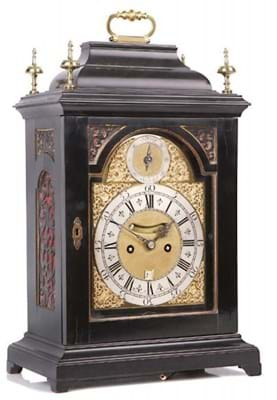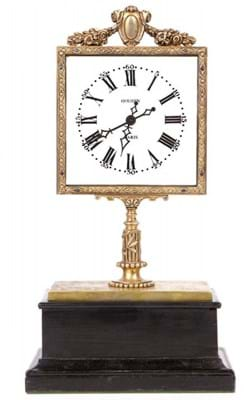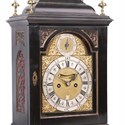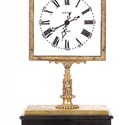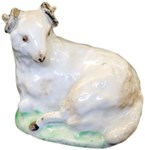Perhaps the most eye-catching success was a mystery clock by 19th century clockmaker-magician Jean Eugene Robert-Houdin. The 13in (35cm) tall bronze and glass clock was an example of the so-called fifth series of Houdin’s work. His first clocks, produced since 1831, had circular dials and worked via the rotation of a glass sheet and a toothed rim to move the hands.
By 1839 Robert-Houdin thought clocks were losing their mystery and developed the square-dial model which works through minute oscillations produced by a cam and rod which he produced until 1844. Last December Chiswick sold a series two clock for £14,000.
The March 21 version, signed to the 4¾in (12cm) dial Houdin Paris, was pitched at £10,000-15,000 but set what the auctioneers believe to be a record when it sold at £17,000. The bidder was a Continental European collector, as was the buyer of the series two example.
From nearly a century and a half earlier came the best-seller among the Chiswick horology stars, an early 18th century, ebonised bracket/table clock signed to the 7in (16cm) silvered dial, the backplate and the twin fusee movement by the renowned Joseph Windmills, London.
The 20in (52cm) tall clock was in full working order and the pull quarter repeat, striking on six bells, was functioning. It lived up to expectations selling to a UK collector at a top-estimate £20,000.
A sign of the times is that only three longcases were offered at Chiswick. Best by a distance was a c.1690-1700 month-going clock signed to the 12in (30cm) square brass dial John Williamson in Leeds Fecit.
Although from Leeds, Williamson was admitted as a free Brother in the Clockmakers’ Company in London in 1682 and the quality of his clocks are considered on a par with the main London makers of the time.
In a 7ft 3in (2.21m) high olivewood and marquetry case, it sold on the lower end of a £8000-12,000 estimate.


